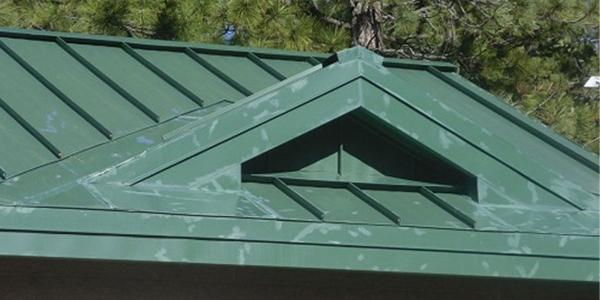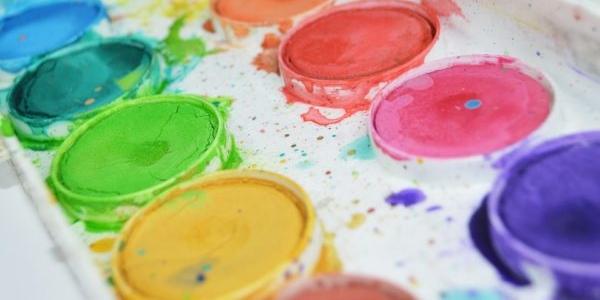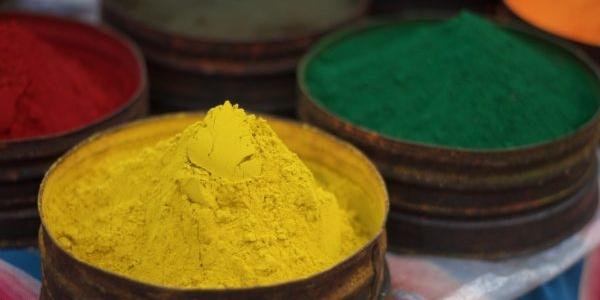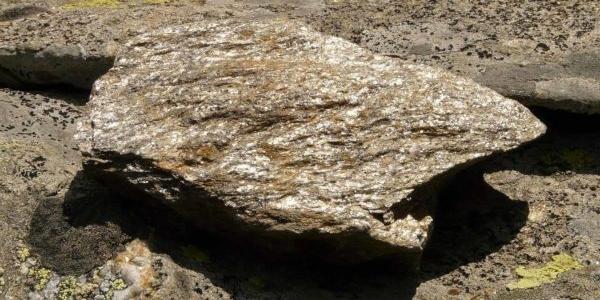Preserving the pristine look of metal

By ASC Building Products
Understand chalk and fade before your next metal roofing or siding project begins.
When opting for metal roofing or siding, it's crucial to consider how these materials will stand up over time, particularly regarding chalk and fade, to maintain their appearance well into the future. A metal roof, with the right care and installation, can last over 50 years. However, exposure to the elements naturally leads to some degree of chalking or fading. Carefully choosing your product and color by understanding these factors can ensure your project remains aesthetically pleasing for decades.
Read below for key tips and tricks with chalk and fade:
A bit about pigments

Paints consists of three primary components:
- Resins – The binder that provides the coating’s physical and chemical attributes and determines how effectively the paint will adhere to a surface, flex and form, and weather. The resin chemistry is also the paint type name; polyester, SMP, acrylic, epoxy, PVDF, etc.
- Pigments – The primary role of pigments is to impart color, but they also contribute to energy efficiency, corrosion resistance and UV protection.
- Solvents – The solvent dissolves the resin and pigment components into a consistency suitable for application.


Another key consideration is pigment type. They are insoluble solid particles that are finely ground and dispersed in the resin and there are two key types – organic and inorganic.
Organic pigments are typically derived from plants whereas inorganic pigments are metallic compounds or oxides that are further processed to provide excellent color stability. Organic pigments are usually brighter than inorganic pigments and can provide a cleaner or more distinctive look. However, organic pigments are less durable and fade faster when exposed to ultraviolet (UV) light, a key consideration for exterior building design. For some high visibility applications, the use of a clear coat over the top of finishes with bright organic pigments can help reduce color fade.
What is fade?
It is a fact that any item exposed long term to elements such as UV rays, water, chemicals, pollution etc., will fade in color over time. Fade typically refers to the breakdown of pigments in the metal’s paint coating, resulting in a washing out or lightening of the original vibrant or rich color. No matter what type of pigment, resin or process a manufacturer uses, any item that will be used outdoors will fade over time. Bold and bright colors such as reds, blues and greens have shown to fade the quickest as they are organic pigment based. Selecting metallic or earth tone colors such as silvers, coppers and metallic champagne, will exhibit the least fading over time. To learn more about designing with bright colors, read Design Considerations When Selecting Bold Metal Roofing and Metal Siding Colors by Steelscape.
Think of this like your favorite pair of jeans you wear all the time. The first time you wore it, it was probably very vibrant and colorful as it was brand new and had never been exposed to wear and tear. Now wear those pants for a year and continuous washing, sun exposure, chemicals from the environment and products will lighten the color or possibly even change it. You can extend the life of your jeans through proper care, proper storage and by selecting a high-quality garment in the first place; your roofing or siding is very much the same. Ensuring you select an appropriate color and paint system for your environment and project is key.
What is chalk?
No, we aren’t talking about the white sticks you use to solve math on a board, but “chalking” gets its name from the same sentiment. Chalk or chalking is the white residue that can appear on painted or coated metal surfaces over time. Basically, metal panels are exposed to UV rays on a daily basis and over time, the sun starts to break down the resins. As the resins degrade, it can begin to lose adhesion, with oxygen and pollutants expediting the process. As the surface breaks down further, the degraded particles turn white and become visible as chalking.
How much a panel will chalk depends on the quality of the paint system. The Polyester and Silicone-Modified Polyester (SMP) paint systems tend to have good to excellent chalk performance. Polyvinylidene fluoride (PVDF) will hands down give you the longest length of time until chalk appears.
Metal roofing and siding paint systems
Selecting your paint system can be very important when considering metal roofing or siding chalk and fade. Today we will be looking at PVDF and SMP as they are the best paint systems to consider when looking at factors such as chalk and fade. ASC Building Products specializes in using SMP and PVDF paint systems. You can view all the available colors, by checking out our Interactive Color Chart.
Fluorocarbon/polyvinylidene fluoride (PVDF) paint systems are known by several names (such as Kynar 500® or Hylar 5000®),but they all use the same polymer and provide the most durable paint system in the market. PVDF systems exhibit exceptional chemical, chalk and fade resistance and can resist degradation when exposed to aggressive weather elements such as urban grime, air pollutants, salt, high temperatures and humidity. Their high formability means they can be used on a wide range of preformed shapes, making them ideal for high-end architectural and high-profile commercial projects.
Expectedly, this paint system does attract a price premium over the more economical options. Some low cost PVDF options are available in 50% PVDF formulations, but testing has shown that PVDF systems are most durable when it makes up 70% of the overall resin composition. You may spend less upfront but long-term performance is shown to drop off. In the end, you get what you pay for.
Silicone-Modified Polyester (SMP) paint systems are a step below PVDF in terms of long-term performance and warranty, but still provide excellent color and gloss retention and are suitable for a wide range of applications.
Both PVDF and SMP systems are available with energy efficient, cool pigmentation, allowing homeowners to save on energy costs. To learn more about the different paint systems offered, read our blog; Good, Better and Best Paint For Metal Roofing & Siding.
Factors affecting chalk and fade
The main factors that lead to chalk and fade are:
- UV or sun exposure – The amount and strength of UV exposure will be the largest factor in how a metal roofing or siding panel fades. The greater the sun exposure, the greater the sun damage.
- Temperature – Extreme hot and cold, or frequent, drastic fluctuations in temperature will weaken the pigments in your paint by altering the chemical makeup.
- Moisture – Rain, snow, condensation, seawater, ANY form of moisture will affect your paint over time. Paint systems were designed to withstand water, but constant exposure will speed up the process.
- Pigment – Organic pigments offer the most colorful, vivid colors but tend to fade faster than inorganic. Inorganic pigments are created from minerals and oxides with superior color fastness and perform much better than organics long-run but are less bright in color.
- Paint system – Both SMP and PVDF paint systems offer you long lasting protection and beauty, but the cost and attributes are a little different. Selecting the right one for your individual situation is key.
Warranty information
Headline warranty numbers, such as ’30 years’ typically refer to the integrity of the painted finish – that is, it won’t lose adhesion, crack or deform for the indicated period. The warranty duration for color fade or chalk may be something different. Further, the amount of color fade or chalking allowed within a set duration may vary between paint systems and suppliers (chalking is the creation of a white chalk like substance as the pigments of the paint break down due to UV exposure).
Often, warranties will provide a table of coverage depending on the environment and severity of exposure to elements such as corrosion and industrial exposure. These environments will typically have a reduced coverage period. Click here to view warranty information for ASC Building Products colors.
In conclusion…
Metal roofing and siding chalk and fade are as inevitable as your favorite clothing lightening after dozens of washes. By ensuring you select a high-quality paint system, you can extend the vibrancies and fresh look of your metal roofing or siding investment for years to come.
Original article source: ASC Building Products, .
Learn more about ASC Building Products in their Coffee Shop Directory or visit www.ascbp.com.






















Comments
Leave a Reply
Have an account? Login to leave a comment!
Sign In